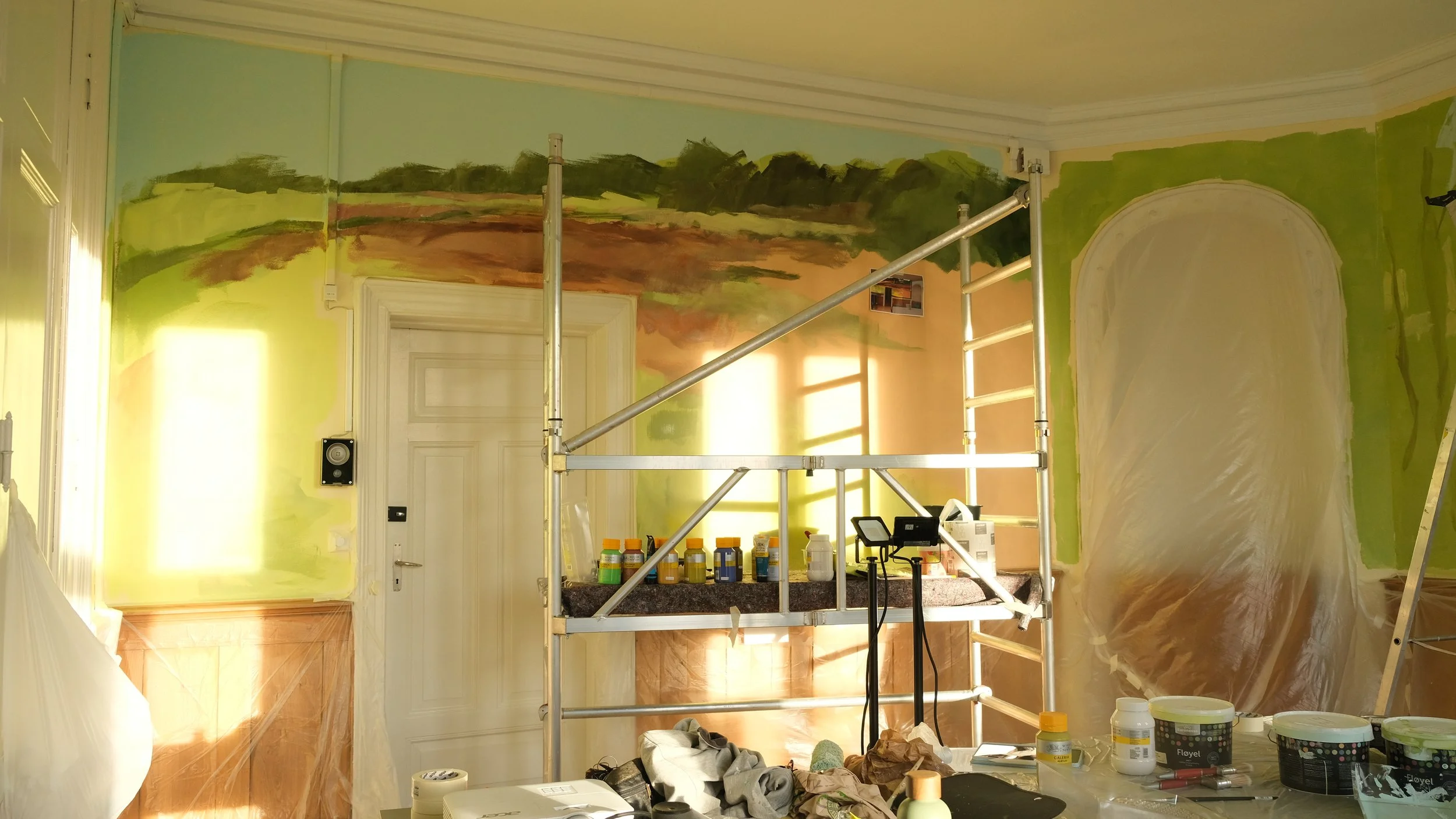Mural Painting at Vestre Aker Skole, Oslo
How can you visually connect a place to its history?
-
How can you visually connect a place to its history? -
Curiosity and Guardianship
The wall you see first when entering into the room is the one depicting various figures in front of a nature backdrop, which connects the outside (glanced at through the windows) with the inside. The left motive connects as a direct visual quote of the old orphanage’s logo (Christiania Opforstringshus) the building’s present to the past. The man guiding the child is a nod to Framnes, who - having grown up in the orphanage and then worked at it for his entire life - was one of the corner stones of its recent history.
The children to the right demonstrate the ideal learning environment: community and a natural curiosity about the world around them.
There are connections to be found from Store Ullevåls Gård back to the Middle Ages. This wall depicts the building as it was in the 17th century, at the hight of the farm’s success. The composition is inspired by an old aquarelle belonging to the Oslo Museum, which depicts the historic scene. The forest to the left connects this mural’s motive with the one on its left.
The building which houses Vestre Aker Skole has a mutlifaceted history. Having been a farm in the 1800s, it was then transformed into an orphanage in the early 1900s. The school took over in the late seventies.
This comission work combines various motives from the schools history, quoting the old enblem of the orphanage, giving a homage to an old employe and impersonifikation of the schools hostory, (name). Old etchings and a painting by the Norwegian artist Edvard Munch are quoted and create thus a cohesive piece which speakes about context and history without becoming stuffy.
Store Ullevål Gård
Ullevålseter used to be the old location of Store Ullevål Gården, before the Farm moved into the building that houses Vestre Aker Skolen today. This mural combines this part of the building’s history with another wall known part of Norways cultural history: The work of the painter Edvard Munch. The scenery is inspired by the artwork “sloughed field”, following his organic painterly brushstrokes. This wall together with the blue of the Logo of the Orphanage created the colourscheme for the whole room.

